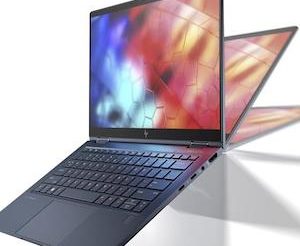Engineering plastics power innovation in consumer electronics

The market for engineering plastics in electronics applications is seeing good growth—in fact, according to a business report from MarketsandMarkets, it is projected to be valued at $115.10 billion by 2023. I can’t say I’m surprised. I attended the Consumer Electronics Show (CES) in Las Vegas for several years, and it is a wonderland of plastics applications. The annual event is currently underway in the city that really never sleeps through Jan. 10.
HP Inc. hit the CES show floor running with its introduction of a variety of new PCs, displays and accessories, including the world’s first notebook and sleeve made from ocean-bound plastic materials.
 |
| HP’s Elite Dragonfly reportedly is the world’s first notebook made from ocean-bound plastics. |
“We are passionate about creating devices and computing experiences that lead us into the future and enable more freedom in how the next generation creates, consumes content and collaborates,” said Alex Cho, President, Personal Systems, HP Inc.
While plastics are taking a hit for consumers’ use-and-toss attitude, plastic materials continue to offer greater functionality for electronic devices. HP’s Elite Dragonfly is connected securely with 5G and has smart signal technology to boost antenna performance. Privacy mode can be activated with the press of a keyboard button to instantly block prying eyes from viewing the screen. Best of all, HP’s Elite Dragonfly reportedly is the world’s first notebook made from ocean-bound plastic material; also, more than 82% of the mechanical parts are made from recycled materials.
Sustainable accessories offer users the opportunity to participate in helping create useful products with plastic waste and ocean-bound plastic, one of HP’s big initiatives. The HP Renew Sleeve is created with knit recycled plastic bottles and knit-to-shape with minimal manufacturing waste.
Additionally, the HP Renew series of accessories include a backpack, top-load tote and slim brief made from 100% recycled PET, or plastic bottles.
Lenovo unveiled full details of its revolutionary foldable PC at CES. ThinkPad X1 Fold is the first fully functional PC with a folding OLED display. Designed to offer unprecedented productivity, it offers a ground-breaking new form factor that will re-imagine mobile computing, said Lenovo in its announcement. As it “morphs” through multiple modes, from a small footprint device into a fully flat 13.3-inch display, X1 Fold will deliver laptop efficiency with smartphone portability, added the company.
While no information was available on the type of plastic used for the foldable screen, a report from plastemart.com noted that new polymer grades, additives and fillers have been developed to meet thin-wall, high-temperature requirements in electronic devices.
“Plastic electronics, based on inherently conductive polymers and flexible substrates, will herald a new era in the electronics industry,” said the report. In the future, we can expect to see “roll-up displays used with computers and mobile phones,” as well as flexible films, new materials such as carbon nanotubes and organic molecules with semi-conducting properties that “will enable a new generation of plastic electronic displays for cell phones and other portable devices.”
